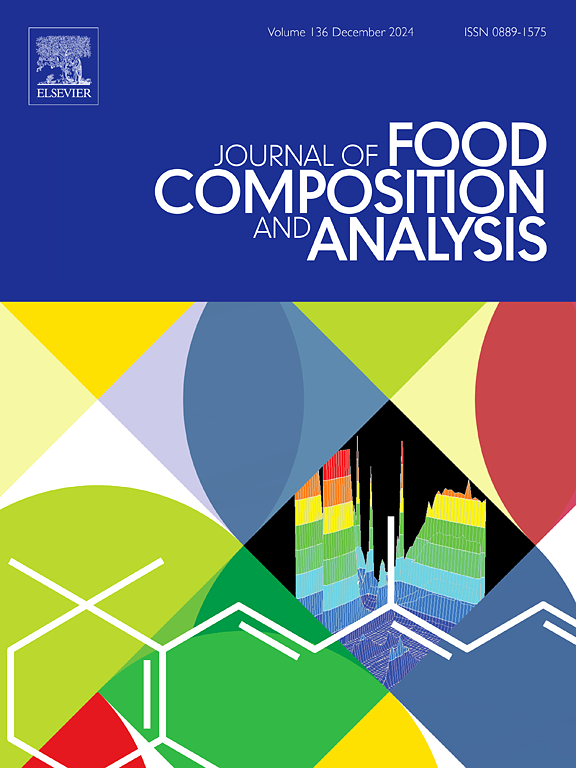Ni-Co MOF/ Zn-NTA nanoflowers as adsorbent for dispersive solid phase microextraction of triazole fungicides in water and fruit juice samples before their HPLC-DAD detection
IF 4
2区 农林科学
Q2 CHEMISTRY, APPLIED
引用次数: 0
Abstract
A dispersive solid phase microextraction (d-SPME) method was developed for the trace level analysis of Difenoconazole (DFC), Hexaconazole (HXC) and Triticonazole (TRT), which are the triazole fungicides most commonly used by vegetable and fruit producers. Ni-Co MOF/Zn-NTA nanoparticles synthesized for precise and precise extraction of three different triazole fungicides without matrix interference before developing the method were successfully characterized by FT-IR, XRD, FE-SEM, SEM-EDX. pH (5), amount of adsorbent (20 mg), adsorption time (6 min) and desorption time (6 min), sample volume (30 mL) and type of eluent (methanol/ammonia mixture (95/5, v/v) were optimized. Enrichment of three different triazole fungicides were done under optimal conditions for real samples. The preconcentration factor was 30. The results of LOD and LOQ values for DFC, HXC and TRT were determined as 1.5–2.5 ng mL−1 and 5.3–8.0 ng mL−1, respectively. In the developed d-SPME method, RSD values were determined to be below 5 %.
求助全文
约1分钟内获得全文
求助全文
来源期刊

Journal of Food Composition and Analysis
工程技术-食品科技
CiteScore
6.20
自引率
11.60%
发文量
601
审稿时长
53 days
期刊介绍:
The Journal of Food Composition and Analysis publishes manuscripts on scientific aspects of data on the chemical composition of human foods, with particular emphasis on actual data on composition of foods; analytical methods; studies on the manipulation, storage, distribution and use of food composition data; and studies on the statistics, use and distribution of such data and data systems. The Journal''s basis is nutrient composition, with increasing emphasis on bioactive non-nutrient and anti-nutrient components. Papers must provide sufficient description of the food samples, analytical methods, quality control procedures and statistical treatments of the data to permit the end users of the food composition data to evaluate the appropriateness of such data in their projects.
The Journal does not publish papers on: microbiological compounds; sensory quality; aromatics/volatiles in food and wine; essential oils; organoleptic characteristics of food; physical properties; or clinical papers and pharmacology-related papers.
 求助内容:
求助内容: 应助结果提醒方式:
应助结果提醒方式:


